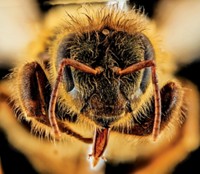Advertisement
Grab your lab coat. Let's get started
Welcome!
Welcome!
Create an account below to get 6 C&EN articles per month, receive newsletters and more - all free.
It seems this is your first time logging in online. Please enter the following information to continue.
As an ACS member you automatically get access to this site. All we need is few more details to create your reading experience.
Not you? Sign in with a different account.
Not you? Sign in with a different account.
ERROR 1
ERROR 1
ERROR 2
ERROR 2
ERROR 2
ERROR 2
ERROR 2
Password and Confirm password must match.
If you have an ACS member number, please enter it here so we can link this account to your membership. (optional)
ERROR 2
ACS values your privacy. By submitting your information, you are gaining access to C&EN and subscribing to our weekly newsletter. We use the information you provide to make your reading experience better, and we will never sell your data to third party members.
Biological Chemistry
Love Potion
Orchids masquerade as exotic female bees to attract males
by Sarah Everts
June 2, 2008
| A version of this story appeared in
Volume 86, Issue 22
concentrations of (Z)-7-heneicosene, (Z)-7-tricosene, and (Z)-7-pentacosene (at left, n = 12, 14, or 16, respectively) than those in a pheromone cocktail of female bees; male bees simply can't resist the orchids' lure.

concentrations of (Z)-7-heneicosene, (Z)-7-tricosene, and (Z)-7-pentacosene (at left, n = 12, 14, or 16, respectively) than those in a pheromone cocktail of female bees; male bees simply can't resist the orchids' lure.
THE SCENT OF foreign females is a more potent attractant than a whiff of the girl next door—at least for European male bees.
European orchids exploit the male bees' predilection for expat females to their advantage, releasing odors very similar but not identical to the sexual hormones of the female bee. Male bees like the foreign potion so much that they will preferentially chase the flower scent over the female bees' pheromone cocktail. The orchids use this sexual deception to facilitate their own pollination, according to a new study (Proc. Nat. Acad. Sci. USA, DOI: 10.1073/pnas.0800194105).
"The flowers are code breakers; they have beaten the female bees to the ideally attractive signal for males," comments Robert Raguso, a chemical ecologist at Cornell University.
That the bees, Colletes cunicularius, prefer the orchid scent over the real McCoy came as a surprise, says the study's lead author, Nicolas J. Vereecken, a chemical ecologist at the Free University of Brussels. When Vereecken and collaborator Florian P. Schiestl from the University of Zurich set out to investigate how Ophrys exaltata orchids trick male bees into mating, they thought the orchids would release a precise chemical mimic of indigenous female bee pheromones, which is composed of 60 different chemicals. "We were expecting the flowers to release mating signals that accurately imitated local female bee sex pheromones," Vereecken says.
But instead of precisely copying the local female bees' bouquet, the orchid's scent contains a higher relative proportion of (Z)-7-tricosene, (Z)-7-pentacosene, and (Z)-7-heneicosene. Since the relative concentrations of bee pheromone components typically vary slightly with distance, the orchids are masquerading as foreign female bees, Vereecken explains.
Orchids may have developed the more attractive perfume because the flowers experience a higher selection pressure than do female bees. "There are so many male bees and so few females that pretty much every female is fertilized as soon as she emerges from the ground, but only 10% of flowers experience a bee visitation. So the orchids are more limited in reproductive success" than female bees, Vereecken says.
Male bees may be attracted to slightly unusual pheromone mixtures because they typically don't travel far to find mates, and so foreign signals, seemingly from nearby bee populations, may be preferred to avoid inbreeding, Vereecken adds.
The next big question is "whether this preference changes over time," Raguso notes. "The orchid can't be too successful or it would outcompete female bees for male attention," and then there would be fewer bees to pollinate orchid flowers in the future, he says. How bees and flowers resolve such romantic tensions is a subject for future research.






Join the conversation
Contact the reporter
Submit a Letter to the Editor for publication
Engage with us on Twitter